When it comes to U.S. immigration, fingerprinting isn’t just another task it’s a critical step in your background check. Unfortunately, many applicants are shocked when their fingerprint submissions get rejected, delaying everything from green card approvals to work visas.
Why does this happen? And more importantly, how can you prevent it?
At PDX Fingerprinting, we’ve helped hundreds of immigrants get their fingerprints accepted on the first try. In this blog, we’ll cover the top reasons fingerprinting gets rejected and what you can do to avoid these costly mistakes.
1. Poor Fingerprint Quality
The #1 reason for rejections? Poor quality prints.
If your prints are too light, too dark, smudged, or incomplete, the FBI or USCIS may be unable to process them.
Common causes:
- Excess lotion or oils on fingers
- Dry or cracked skin
- Excessive ink or dirty scanners
- Rushed or untrained technicians
Pro Tip: Always go to a professional fingerprinting provider. At PDX Fingerprinting, we ensure clear, complete prints using FBI-compliant methods for both Live Scan and FD-258 ink cards.
2. Using the Wrong Fingerprint Format
Not all immigration fingerprinting is the same. Some agencies accept only Live Scan, while others require ink fingerprints on specific forms.
For example:
- Consular processing often requires FD-258 ink cards
- USCIS biometrics (for green card or citizenship) are done at Application Support Centers
- FBI background checks for immigration attorneys or visa sponsors may require Live Scan
Using the wrong format = automatic rejection.
At PDX Fingerprinting, we can help you choose the right format and ensure it matches your application requirements.
3. Incorrect or Incomplete Information
Even if your fingerprints are perfect, missing or incorrect details on your fingerprint card or submission form can lead to rejection.
Common errors include:
- Misspelled name or missing aliases
- Wrong date of birth
- Incomplete mailing address
- Incorrect reason for fingerprinting (e.g., “immigration” not specified)
- Leaving fields blank on the FD-258 card
The FBI and USCIS require complete and accurate information no exceptions.
We guide you through the form at every appointment, minimizing mistakes that cause delays.
4. Damaged or Reused Fingerprint Cards
If you’re submitting ink fingerprints on FD-258 cards, they must be:
- Original (not photocopies)
- Undamaged (no smudges, folds, or water damage)
- New and unused (don’t reuse older cards)
Tip: Keep your cards clean, flat, and safe when mailing to the FBI or other agencies.
Need help mailing them in? We can assist you at PDX Fingerprinting.
5. Submission to the Wrong Agency or Address
This happens more often than you’d think people send their fingerprints to the wrong agency or address and never hear back.
Here’s what to double-check:
- Are you sending it to the FBI, USCIS, DOS, or another agency?
- Does the agency accept digital Live Scan or require hard copies?
- Is there a specific mailing address for your type of application?
Our team stays up to date with federal and state agency requirements, so you don’t have to.
6. Low-Quality Scanners or Inexperienced Technicians
Not all fingerprinting providers are created equal. Some use outdated scanners or improperly trained staff, leading to distorted or incomplete fingerprints.
This is especially risky if you’re using Live Scan for an FBI report, which is often used to support:
- Visa applications
- Green card filings
- Immigration waivers
- Asylum or refugee status
At PDX Fingerprinting, our trained staff uses FBI-approved equipment and provides a reprint guarantee in case of issues.
7. Submitting Fingerprints Too Early or Too Late
Timing matters.
Submitting prints too early (before receiving a notice or case number) may cause delays. On the other hand, submitting them too late might cause your immigration case to be canceled or put on hold.
For USCIS applicants, always wait for your biometric appointment notice.
For FBI background checks or consular processing, speak to an immigration attorney—or reach out to us for guidance on when to fingerprint.
Bonus: Not Getting an Apostille When Needed
For applicants outside the U.S., it’s not enough to get FBI fingerprinting. You may also need to apostille your FBI background report before submitting it to a consulate or embassy.
Don’t know what an apostille is? Read our detailed guide here:
FBI Apostille Services
We can handle fingerprinting + FBI report + apostille all in one place.
How to Avoid Fingerprint Rejection (Summary)
| Mistake | How to Avoid It |
| Smudged/unclear prints | Use professional fingerprinting services |
| Wrong fingerprint method | Confirm if Live Scan or ink is required |
| Incomplete form | Double-check all fields on FD-258 |
| Wrong submission address | Ask your provider or attorney |
| No apostille (if required) | Request it during your appointment |
| Poor quality scans | Choose a provider with updated equipment |
Why Choose PDX Fingerprinting?
We understand the stakes when you’re applying for immigration benefits.
That’s why we offer:
Live Scan and Ink Fingerprinting
FD-258 FBI Card Processing
Apostille & Translation Services
Same-Day & Mobile Appointments
Expert Staff Who Understand Immigration Requirements
Visit our location in Portland or schedule a mobile fingerprinting appointment today.


